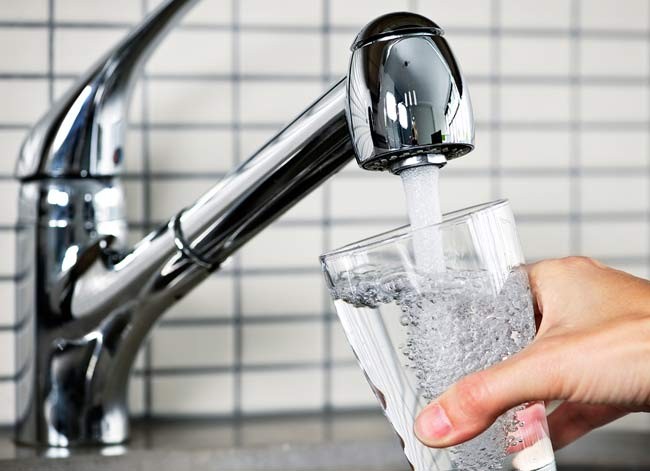- Make It Yourself Lavender Heart-Shaped Bath Bombs!
- 20 Things You Never Knew About “Down There”
- 12 Best Foods For Those Suffering From Arthritis Pain
- 12 Personal Hygiene Mistakes Almost Everyone Makes (Mom Never Told You About #4!)
- 15 Medicinal Plants And Herbs From The Cherokee People
- 12 Mind-Blowing Benefits Of Drinking Coconut Water During Pregnancy
- 12 Outstanding Winter Foods That Won’t Fatten You Up Like A Christmas Turkey
Could the World Run Out of Fresh Water by 2040?
Two new reports, based on three years of research, finds that in the next 25 years, fresh water may be in short supply. In fact this frightening study suggests that the population of the entire world might find themselves high and dry by 2040.
In fact, by 2020, as much as 40 percent of the world’s population might be hit with water shortages. Many of these shortages are due to the way that coal and natural gas fueled power plants operate.
Scientists from CNA Corporation, Aarhus University in Denmark, as well as the Vermont Law School came together to study current energy production methods and how they stand up to clean water sustainability. Shocked by their findings, they are raising the alarm. If human beings continue down the same path of energy production, using the same methods we are today, wasting billions and billions of gallons of water to cool power plants that are fired by coal, then all sources of clean water could run dry in just 25 years.

Photo credit: bigstock
Almost everyone is aware, at least in part, that there are water shortages in all parts of the world. However, too many Americans believe that one way or another, they will always have easy access to fresh water. This simply isn’t the case. Water scarcity is quickly becoming a huge problem for the USA. If we do not take measures now, this problem will become critical by 2020. Take another look at that year, folks. That is only 6 years away!
Coal and natural gas power plants need cooling cycles in order to function. This means millions and millions of gallons of water are needed every single day. This water is generally taken from whatever environment is nearby to help cool the power plant. The US Energy Information Administration estimates that 67 percent of all power plants in 2013 produce electricity from non-renewable fossil fuels.
Unbelievably, the researchers discovered that most of these power plants do not even record how much water they use during the cooling process. With absolutely no quality controls in place, no plan for efficiency, these power plants appear to have no problem wasting untold amounts of water. As our reservoirs, streams, and lakes are depleted, water security for the general public is lost and there is no looking back.
SEE ALSO: Will Water be Worth its Weight in Gold Soon?
One professor, Benjamin Sovacool from the Aarhus University was shocked and upset by this fact. He stated that this was a huge problem for the electric provider sector. How could they not realize, or care, how much water they are consuming? In today’s world, we don’t have unlimited water resources. This can lead to a serious crisis if things do not change soon.
As a consequence, not accounting for water expenditures by power plants could mean that some parts of the world are going to have serious water shortages as quickly as 2020. Studies predict that as much as 40 percent of the population of the world could suffer from shortages in a very short period of time. Vast parts of the world might be faced with a sobering choice: continue to generate electricity as we are now, or have safe, clean drinking water.
It’s pretty obvious that access to drinking water will trump energy needs. Power plants will have to find ways to adapt to a water shortage crisis by converting to wind, geothermal, or solar powered electricity options.
Of course there might be other ways in which power plants can be cooled without using untold millions of gallons of water. It’s very likely that governments will impose new regulations that limit the amount of water that these power plants can use. More than half of the planet will have no choice but to pitch those fossil fueled energy production plants and will have to create solar and wind generated energy sources.
YOU MIGHT ALSO LIKE: 7 Shocking Things You Never Knew about Bottled Water
Currently, in the USA, solar power makes up only 0.23 percent of our total energy production. Total energy production in 2013 in the USA was 4,058 billion kilowatt hours. Wind turbine power makes up 4.13 percent of that figure above. Coal makes up about 39 percent and natural gas makes up about 27 percent.
These statistics make it clear that there is a great need for alternative energy sources. The issue is not a simply about politics; it’s not just about preserving the economy. The way we produce energy is now a matter of human survival! Will our wasteful energy production methods take precedence over clean drinking water for the people of the world?
Will the world recognize this crisis before it hits home?

































carole smith
Oct 6, 2014 at 3:08 pm
We all need to start using rain barrels to collect water for our gardens. It does not have to be expensive to set them up. Of course, if you live in one of those strange places that has a government that claims all water given by God to the earth, then you may have a problem.